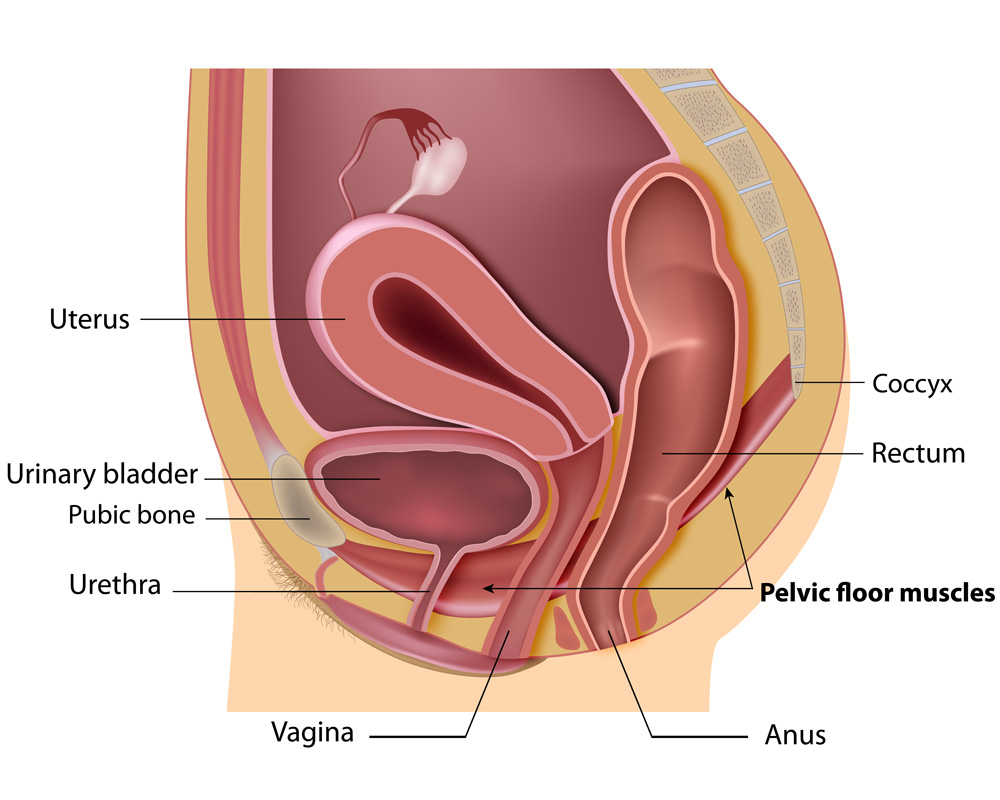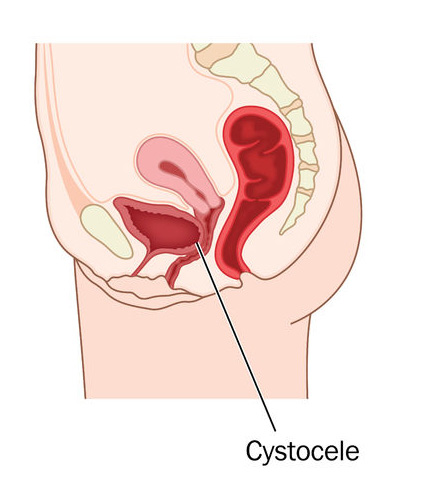
Pelvic Organ Prolapse occurs when one or more pelvic organs "drop" from their normal position.

When the bladder is no longer in its normal position, it "drops" and bulges into the vagina. This condition, a cystocele, may be called a "fallen" or "weak" bladder.
Common Symptoms & Concerns
- Feeling of pressure or heaviness in the pelvic area
- Bulge or ridge in the vagina
- Urinary incontinence or other emptying disorders of bowel or bladder
- Discomfort during sexual intercourse
About Pelvic Organ Prolapse
Pelvic organ prolapse is the term used to describe the "drop" of one or more pelvic organs from their normal position. Typically, it is the result of injury during childbirth or pregnancy or as the result of aging, menopause or traumatic injury. It is sometimes referred to as "fallen bladder" or "dropped bladder" – though other organs may be involved.
What are the Symptoms of Pelvic Organ Prolapse?
Some symptoms may include a vaginal bulge, the feeling that something is falling out of the vagina, the sensation of pelvic heaviness or fullness, feelings of incomplete urination and stress urinary incontinence – the involuntary leaking of urine when you cough, sneeze, laugh, or engage in physical activity. The symptoms can vary – so its really important to have an accurate diagnosis and a plan of care that's right for you.
Types of Pelvic Organ Prolapse
- Cystocele (bladder prolapse) occurs when the vaginal wall weakens and allows the bladder to herniate into the vagina. This condition can often cause stress incontinence.
- Enterocele (small bowel prolapse) is a condition that occurs when the small bowel presses against or herniates into the vagina.
- Rectocele (rectum prolapse) occurs when the back of the vaginal wall weakens and the rectum presses against or prolapses into the vagina. This condition may create a bulge that is more noticeable during a bowel movement.
- Uterine prolapse (prolapse of the uterus) occurs when the uterus drops into the vaginal canal. There are different degrees of this type of prolapse
- Vaginal vault prolapse occurs when the upper portion of the vagina drops toward the vaginal opening.
Dr. Ashford's Approach To Pelvic Organ Prolapse: In His Own Words
"Our goal is to restore confidence, dignity, freedom and enjoyment of life to women suffering from pelvic organ prolapse and other pelvic floor disorders. These common conditions - urinary leakage, fecal seepage, falling bladders, and pelvic pain - often plague women and dramatically impact their lifestyle.
We always begin with an accurate diagnosis. We use rehabilitative and curative care plans that are attentive to our patients' emotional, educational and physical needs. Where surgery is required, your care plan may include both pre- and post- operative physical therapy to rehabilitate your pelvic function.
We offer non-surgical and surgical treatment for symptomatic pelvic organ prolapse. The approach is individualized dependent upon the patient’s symptoms, anatomic defect, surgical history and the patient’s personal opinions."
Click to visit our Urogynecology Center site for more information.

